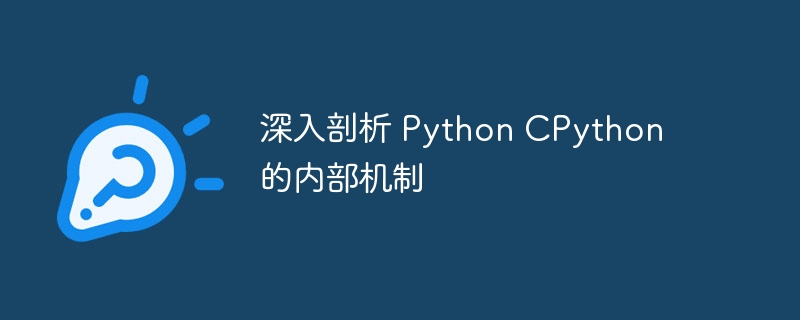

python, CPython, bytecode, interpreter, garbage collection
Python code is compiled into bytecode before execution. Bytecode is an intermediate representation that is more compact and easier to interpret than source code. CPython uses a bytecode interpreter, which reads the bytecode line by line and performs the appropriate operations.
# 原始 Python 代码 def sum(a, b): return a + b # 编译后的字节码(十六进制表示) 00 00 00 00 00 02 00 01 00 00 00 03 00 00 00 01 00 00 00 12 00 00 00 01 00 01 00 00 00 12 00 00 00 01 00 01 00 00 00 12 00 00 00 00 00 00 00 00
The bytecode interpreter works through a loop:
# 创建一个对象并将其赋予一个变量
object = {}
# 另一个指向相同对象的引用
reference = object
# 删除对对象的引用
del object
# 垃圾回收器会在某个时候释放该对象,因为其引用计数为 0Understanding the internal mechanisms of CPython can help optimize code performance. Some common tips include:
join() function or the String<strong class="keylink">io</strong> class. A deep understanding of Python CPython’s internals is essential for improved code efficiency and a deeper understanding of the language’s features. From the bytecode interpreter to garbage collection, this article provides a comprehensive overview of how CPython works. Through the application of optimization techniques, the performance of Python code can be significantly improved.
The above is the detailed content of An in-depth analysis of the internal mechanisms of Python CPython. For more information, please follow other related articles on the PHP Chinese website!
 function function usage
function function usage
 How to view stored procedures in MySQL
How to view stored procedures in MySQL
 How to check deleted call records
How to check deleted call records
 The difference between insertbefore and before
The difference between insertbefore and before
 What language is generally used to write vscode?
What language is generally used to write vscode?
 How to convert nef to jpg format
How to convert nef to jpg format
 Ranking of the top ten digital currency exchanges
Ranking of the top ten digital currency exchanges
 What is the core of a database system?
What is the core of a database system?




